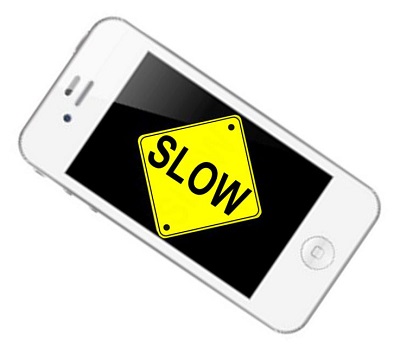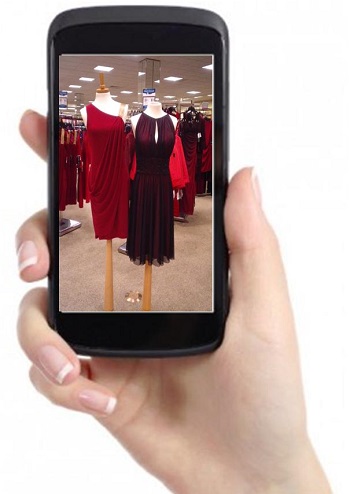Mobile payments are lagging behind in physical stores
Mobile commerce is gaining momentum among consumers throughout the world, but it has yet to become a major force in the retail industry. Retailers have been showing more interest in engaging mobile consumers, largely due to the fact that mobile shopping is becoming so popular with consumers. Mobile commerce may not be as prominent in the retail space as is believed, however, according to a new report from Javelin Strategy & Research.
Only 1% of payments in physical retail stores are made from smartphones
The report shows that 9% of online transactions in the retail space are being made from smartphones. Mobile payments being made in physical stores, however, are quite low by comparison. The report notes that mobile payments with smartphones in physical stores account for only 1% of all transactions being made. When it comes to those making mobile payments in physical stores, those with iOS devices account for the most money spent and make mobile purchases more often.
Mobile payments may become more common in the future
 Using a mobile device to make purchases in physical stores will likely become more common in the coming years. Retailers have been slow to embrace the concept of mobile commerce in their traditional stores, but this attitude is beginning to change due to the growing number of people that rely on their mobile devices when doing their shopping. The report from Javelin Strategy & Research predicts that mobile payments in physical stores will reach $54 billion by 2019, accounting for a significant portion of all transactions made in these stores.
Using a mobile device to make purchases in physical stores will likely become more common in the coming years. Retailers have been slow to embrace the concept of mobile commerce in their traditional stores, but this attitude is beginning to change due to the growing number of people that rely on their mobile devices when doing their shopping. The report from Javelin Strategy & Research predicts that mobile payments in physical stores will reach $54 billion by 2019, accounting for a significant portion of all transactions made in these stores.
Retailers are becoming more mobil-centric
Mobile commerce is considered to be quite convenient by consumers. Many of these people prefer to shop online, using their smartphones to purchase products from e-commerce sites. Retailers are beginning to adapt to the advent of mobile commerce by adopting mobile-centric practices and investing in mobile services that allow them to cater to the needs of mobile consumers that are interested in paying fro products with their smartphones.
Europeans are using their smartphones to buy things and are scooping up deals on clothes.
The results of a study conducted by Ipsos on behalf of ING have been announced and they have shown that consumers in Europe are taking advantage of mobile shopping as well over half of them (58 percent) use their devices to make purchases.
The countries that shop over mobile devices the most in Europe were found to be Turkey and Poland.
At the other end of the scale, Belgium and the Netherlands were the countries in which consumers were least likely to take part in mobile shopping. That said, throughout all of the countries, it was clothing that was the most popular item to purchase. This is a surprising fact, considering that this is the type of product that consumers will usually want to try on before they make a purchase. That said, more than one third (35 percent) of people in Europe who have smartphones and tablets had used their mobile devices to purchase an article of clothing.
The second most common type of item purchased over mobile shopping was electronics (32 percent).
 The third most common mobile commerce category was gaming products, which were purchased by 19 percent of device owning Europeans. Other shopping categories included groceries (17 percent), music (16 percent) and travel (16 percent). All of this data was released in the ING International Survey on Mobile Banking, which was designed to take a closer look at the m-commerce habits of over 10,000 mobile device using consumers throughout Europe.
The third most common mobile commerce category was gaming products, which were purchased by 19 percent of device owning Europeans. Other shopping categories included groceries (17 percent), music (16 percent) and travel (16 percent). All of this data was released in the ING International Survey on Mobile Banking, which was designed to take a closer look at the m-commerce habits of over 10,000 mobile device using consumers throughout Europe.
Among the drivers that have been credited with the popularity of the use of smartphone and tablet commerce has been the simplicity of “one click” ordering. The study showed that 55 percent of mobile shoppers had a greater inclination to make a purchase on their devices when the store allowed them to save their payment information so that they would not be required to enter it the next time they made a purchase.
That said, the draw of these types of convenience have suggested that mobile shopping may be causing some consumers to miss out on certain cheaper deals because they spend less time looking around so that they will be able to check out more quickly.
 Using a mobile device to make purchases in physical stores will likely become more common in the coming years. Retailers have been slow to embrace the concept of mobile commerce in their traditional stores, but this attitude is beginning to change due to the growing number of people that rely on their mobile devices when doing their shopping. The report from Javelin Strategy & Research predicts that mobile payments in physical stores will reach $54 billion by 2019, accounting for a significant portion of all transactions made in these stores.
Using a mobile device to make purchases in physical stores will likely become more common in the coming years. Retailers have been slow to embrace the concept of mobile commerce in their traditional stores, but this attitude is beginning to change due to the growing number of people that rely on their mobile devices when doing their shopping. The report from Javelin Strategy & Research predicts that mobile payments in physical stores will reach $54 billion by 2019, accounting for a significant portion of all transactions made in these stores.
 The third most common mobile commerce category was gaming products, which were purchased by 19 percent of device owning Europeans. Other shopping categories included groceries (17 percent), music (16 percent) and travel (16 percent). All of this data was released in the ING International Survey on Mobile Banking, which was designed to take a closer look at the m-commerce habits of over 10,000 mobile device using consumers throughout Europe.
The third most common mobile commerce category was gaming products, which were purchased by 19 percent of device owning Europeans. Other shopping categories included groceries (17 percent), music (16 percent) and travel (16 percent). All of this data was released in the ING International Survey on Mobile Banking, which was designed to take a closer look at the m-commerce habits of over 10,000 mobile device using consumers throughout Europe.